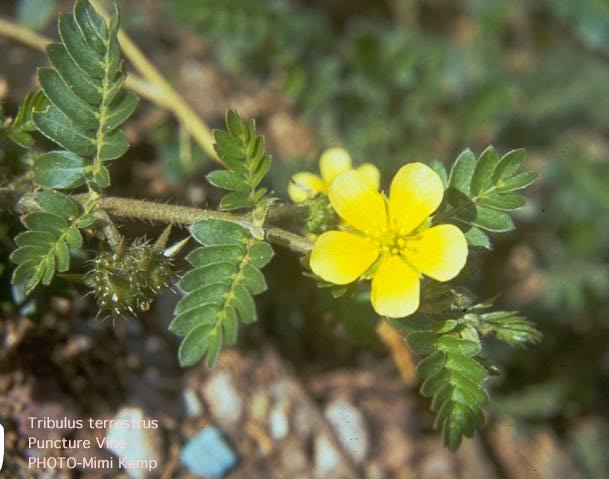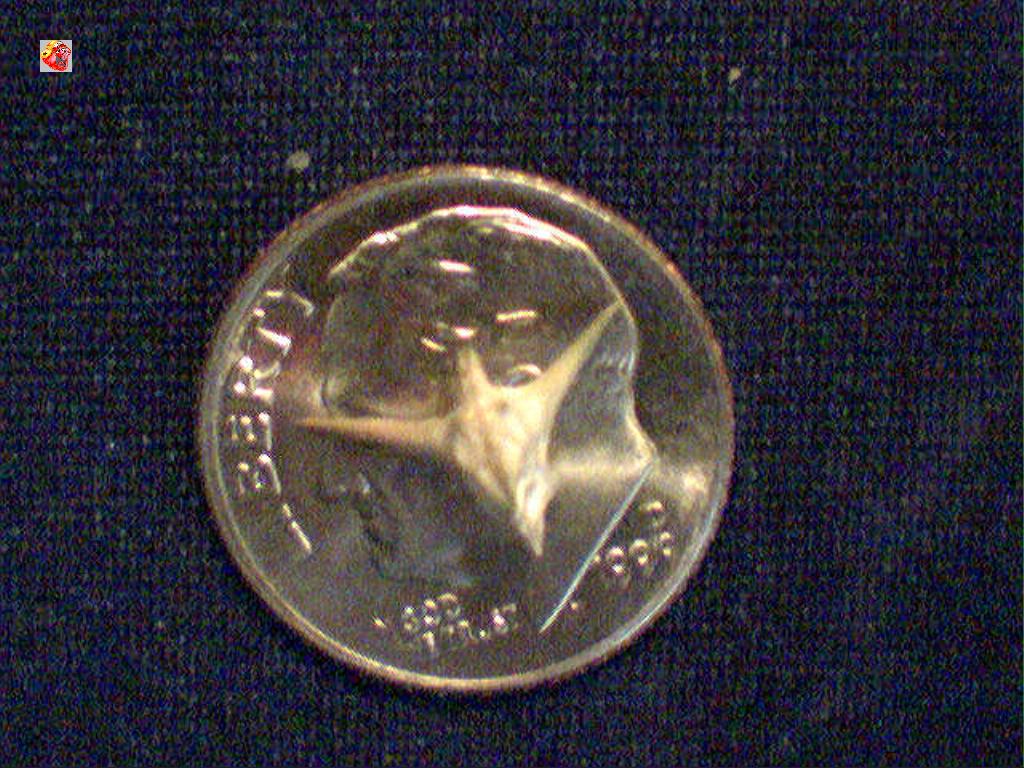Index
Home
About
Blog
From: jbrandt@hpl.hp.com (Jobst Brandt)
Newsgroups: rec.bicycles.tech
Subject: Re: Mr Tuffy Tire Linners
Date: 31 Mar 2000 17:12:48 GMT
Terry Morse writes:
>> Has anyone had any experience with Mr. Tuffy tire liners?
> The shop I worked in used to sell a lot of them in the Stanford
> area, where there's a big thorn problem. They seemed to protect
> pretty well against thorns. Not so well against thumbtacks and
> staples.
The effect is that between tire tread and Mr Tuffy, the length of a
thorn cannot penetrate the tube. It is not that the liner stops the
thorn that esily pieces the strip. However, because thorns do not
travel, they remain in the proximity of their parent plant, puncture
vine and knowing its appearance helps avod its thorns.
Puncture vine (tribulus terrestris) is a frail plant when it comes to
competition. It grows primarily on barren soil, not competing with
grasses and other roadside plants. Therefore, it grows only on
roadsides that have been sprayed with herbicides in an effort to
protect us from cigarette ignited wildfires. Hence, in the summer we
get flats from cigarettes and in the winter from beer (bottles).

http://www.fortnet.org/CWMA/puncture.htm
(terrestrus aka terrestris) some biologists have spelling problems.
Jobst Brandt <jbrandt@hpl.hp.com>
From: jobst.brandt@stanfordalumni.org
Subject: Re: Glass and tire wiping
Newsgroups: rec.bicycles.tech
Message-ID: <nPKBa.18235$JX2.1118803@typhoon.sonic.net>
Date: Fri, 30 May 2003 15:31:31 GMT
Robin Hubert writes:
>>> I used them back in the day, and they seemed pretty effective at
>>> knocking off goathead thorns before they punctured the tube. They
>>> were not at all effective at preventing glass, staple, wire, or
>>> thumbtack punctures.
>> You must have been riding nearly flat tires because a puncture vine
>> thorn is a spine standing on a tetrahedron that is so sharp that
>> lightly laying the palm of the hand on the roadside vine will have
>> them stick in your skin painlessly, it requires so little pressure.
>> If you have more than 50 psi in your tire, the thorn will penetrate
>> practically to its final depth on the first contact. The only ones
>> you could effectively knock off are ones on the sides of the tire that
>> would otherwise penetrate on the first corner taken.
>> http://www.or.blm.gov/Prineville/weed/puncture.htm
>> http://tinyurl.com/d0xo
>> http://www.cwma.org/puncturevine.html
>> http://elib.cs.berkeley.edu/cgi/img_query?enlarge=0000+0000+0801+0392
> Now that I know what this beast looks like I'd like to know the
> distribution of it in the U.S. We don't seem to have it in Illinois
> and the Midwest. Any links?
The trouble is that Tribulus Terrestris is cure-all for quacks and has
many listings in that field, making it hard to find sites that discuss
the plant biologically. It grows in all continents and thrives on
barren soil. That is why it is common on western roadsides that are
sprayed to suppress growth of flammable weeds. Puncture vine
germinates after other plants have sprouted and gone and it grows only
where there are no competitors.
It is my observation that it sprouts only after the first real hot
spell of sumer has passed, followed by some thunder showers here in
California where we have essentially no rain all summer. Roundup (c)
does not kill it either, so late spraying only prevents competitors
from returning but allows its growth.
http://pi.cdfa.ca.gov/weedinfo/TRIBULUS2.html
Jobst Brandt
jobst.brandt@stanfordalumni.org
Palo Alto CA
From: jobst.brandt@stanfordalumni.org
Subject: Re: Glass and tire wiping
Newsgroups: rec.bicycles.tech
Message-ID: <rmOBa.18294$JX2.1120969@typhoon.sonic.net>
Date: Fri, 30 May 2003 19:33:43 GMT
Jay Beattie writes:
>> http://pi.cdfa.ca.gov/weedinfo/TRIBULUS2.html
> The link indicates that glyphosate (RoundUp) is effective on
> puncture vine.
http://www.monsanto.com.au/roundup/RoundupHerbicide.htm
Well it's not. Back in the days when puncture vine was a mystery to
bicyclists in this area (no one knew what the plants habitat or
appearance was) I spooked around and talked to some Stanford
biologists who were incensed that I had the temerity to disagree with
their equally unknowing assessment of the plant. I had foolishly
mentioned my observation that it only grew where the university
sprayed roadsides and that it was a poor competitor with other weeds.
Thereupon they began a selective spraying all summer of previously
sprayed and now puncture vine infested roadsides. Tribulus terrestris
shrank a little but repeatedly came back after being Roundupped(R).
That Roundup(R) negatively affects puncture vine is proven, but it
does not get rid of it.
My main experiment was at my frame builders apartment at the time.
His apartment manager kept the place neat and tidy and among these
tasks was keeping the weeds down in the unplanted plot between
sidewalk and street. He regularly sprayed it in spring and
subsequently puncture vine with its cute yellow flowers kept the plot
green all summer as it strayed onto the sidewalk and over the curb.
We told the man about the flat tires it causes and demonstrated the
density of goat heads in the vicinity. We convinced him not to spray
and that we would trim the weeds. Next summer there was no puncture
vine as we ran a lawn mower over the volunteer wild grasses and clover
occasionally.
Jobst Brandt
jobst.brandt@stanfordalumni.org
Palo Alto CA
From: jobst.brandt@stanfordalumni.org
Subject: Re: Glass and tire wiping
Newsgroups: rec.bicycles.tech
Message-ID: <znPBa.18327$JX2.1121162@typhoon.sonic.net>
Date: Fri, 30 May 2003 20:43:11 GMT
Jasper Janssen <jasper@jjanssen.org> writes:
>>> http://tinyurl.com/d0xo
>> I particularly like the picture of the car tire covered with the
>> thorns.
> Don't these things break into pieces once the business end is
> embedded in even a car tire? I'd expect the other three tines to be
> crushed off..
There are only two thorns per pod, the pod is fairly solid wood in
roughly in the shape of an orange segment of up to 60 degrees having a
single thorn extending from the middle of each arch so that one lies
parallel to the ground while the other stands vertically. The
tip-to-tip outline is a tetrahedron, the base edge bing the diameter
of the orange slice. The flower has 5 petals and the pod has five
segments. This can be seen in the lower picture at:
http://www.or.blm.gov/Prineville/weed/puncture.htm
> Nasty stuff.
No doubt, and the spines have resin on them that make penetration
extremely painful. It hurts just to watch a dog walk into the stuff.
The only defense is to stand still and 'cry'. You must rescue the
dog, carry it away and carefully pull out the thorns.
Jobst Brandt
jobst.brandt@stanfordalumni.org
Palo Alto CA
From: jobst.brandt@stanfordalumni.org
Subject: Re: Glass and tire wiping
Newsgroups: rec.bicycles.tech
Message-ID: <5vOBa.18295$JX2.1120903@typhoon.sonic.net>
Date: Fri, 30 May 2003 19:42:57 GMT
Douglas Landau writes:
> Oh bullshit. Terry is right, they are effective at reducing the
> number of goatshead punctures, even on properly inflated tires, and
> even in the center of the tire. Although sharp, goatsheads are weak
> and easily broken and in the vast majority of cases don't go in
> straight, and get broken off before going in anywhere near far
> enough to reach the air.
Goat heads do not have feet of their own and do not travel far from
the plant unless someone travels through their midst. I think if you
take a close look at these seed pods, you'll see they are made of
highly durable strong yet pliable wood. Therefore, getting one or two
of them is a rarity and if you ride over a plant you will pick up at
least a dozen thorns. If your tire-saver gets even half of them you
haven't gained anything. On the other hand I have seen people sitting
at the roadside pulling them out of their tires and discarding them
onto the street. Thanks!
Jobst Brandt
jobst.brandt@stanfordalumni.org
Palo Alto CA
From: jobst.brandt@stanfordalumni.org
Subject: Re: One for Carl Fogel (at Comcast Dot Net :)
Newsgroups: rec.bicycles.tech
Message-ID: <dYo1e.12364$m31.126987@typhoon.sonic.net>
Date: Sun, 27 Mar 2005 02:33:45 GMT
Carl Fogel writes:
>> So I've been getting a new slew of Spam lately (porn and/or penie
>> pills, mostly), with these goofy "From:" and "Subject:" names.
>> Guess it's the latest strategy to get past filters 'n stuff.
>> ANYWAY, just got back from a ride, and there's an e-mail from
>> "Gallivanting G. Goathead". If I wasn't worried about catching
>> something from just replying to the scumbags, I'd send 'em your
>> close-up picture of a thorn and tell 'em where they might stick it.
> The inescapable conclusion is that that lots of these thorns in your
> tires leads to astonishing levels of virility:
>

> Here's a slightly more believable article:
> http://www.texas.sierraclub.org/bigbend/october03.html
I didn't see much useful information in that lengthy article,
especially because there are easier and more effective ways of
controlling Tribulus Terrestris (that should be Terrestris
Horribilis). As I rode up our beautiful foothills on the east side of
San Jose CA today I was reminded of this by the total absence of
puncture vine that was formerly a solid cover on both roadsides.
This year the road was not sprayed for grass growth nor for other
volunteer weeds, and just as my downtown experiment with the same
method, no puncture vine returned. Puncture vine will not compete
with other plants. Grass fire hazard can be abated later by the
beater method used around here in which a "lawn mower" with chains
instead of blades, beats roadside growth to a pulp, flat on the ground.
Farther up the mountain, at the 4000ft level, a hairpin turn rounds a
ridge on Mt. Hamilton from which the Sierra Nevada in all their snow
capped glory were clearly visible. On ultra clear days Half Dome is
visible along with the extension of the range 100 miles to the south.
The California Central valley is damn flat, and for a long way.
Mt. Hamilton is a great ride with its wildflowers, bird life, elk
beards, and grand vistas and many creeks.
Jobst.Brandt@stanfordalumni.org
Index
Home
About
Blog

